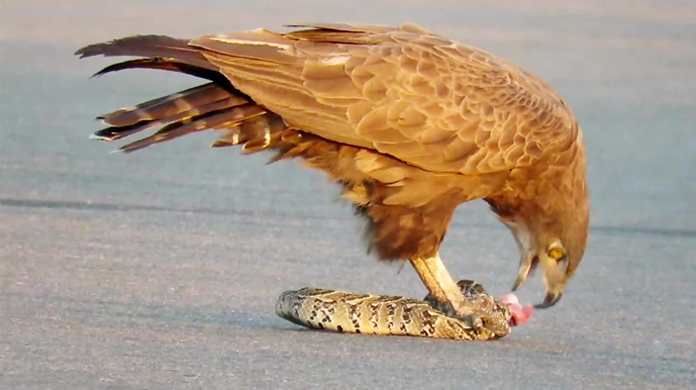This is the moment a Brown Snake Eagle was doing what it does best, catching a snake! But this Puff Adder, as injured as it was, was still trying hard to slither away.
This is an extremely rare sighting; the first time I have witnessed a sighting of this sort! My advice to anyone visiting the park is to drive slowly. When you drive too fast you miss out on a lot. If I had been driving too fast in this instance the bird would have got a fright and flown off and the sighting would have been spoilt.
The puffadder had been slowly slithering across the road when it was attacked by the Brown Snake-eagle. It was pretty gruesome to watch as the eagle began to eat and tear the snake apart while it was still alive. I felt sorry for the snake and it was a sighting that was not easy to watch. Even now when I watch the video I get upset when watching the snake suffering.
Not many people like snakes but this was a painfully slow death. People have asked me why the snake didn’t try and strike the bird. All I can think of is that the eagle had the snake well pinned down and had possibly broken the snakes back which limited its movements. Snake Eagles, like Secretary birds, are prime snake hunters and specifically target snakes.
They have exceptional coordination and use their powerful talons to kill the snake by driving them through its head and body before it can bite them. They successfully avoid being bitten because they are careful. Snake-eagle legs and toes are covered in thick scales that help protect them from bites.
The eagles don’t have hair on their legs. Snake bites are a serious risk: snake-eagles take on some of the swiftest and deadliest snakes in the world. Snake eagles are not immune to snake venom.
The snake eagle tore the snake in half and soon after flew away to enjoy his supper with only the tail end in his beak, the end without venom. The venom glands are located in the head of the puffadder. This part of the snake was left lying on the road.



